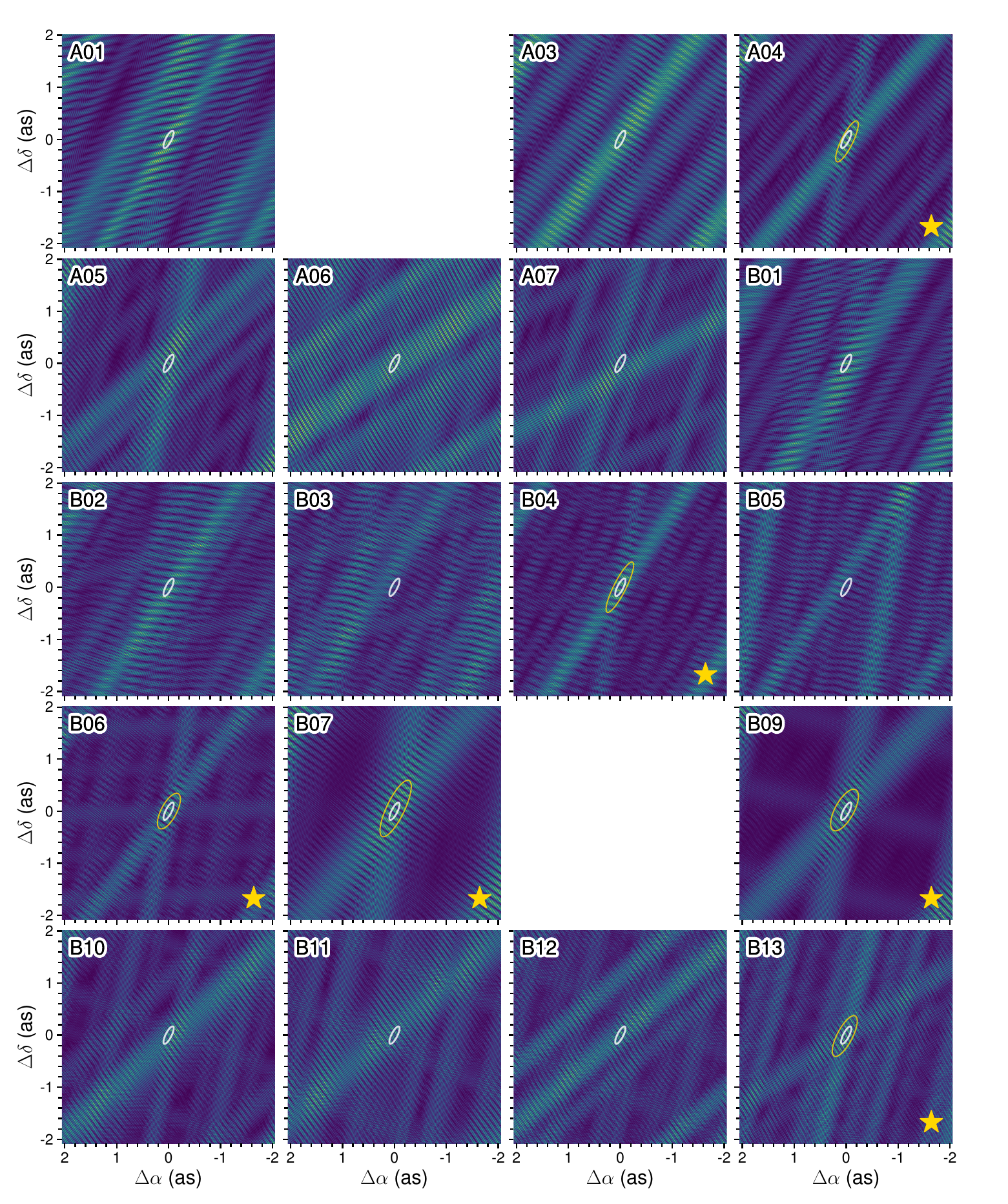SFXC workshop 2025 • FRB Processing
On this page
Introduction
FRBs – Fast Radio Bursts – are millisecond-duration, extremely luminous flashes that have as of yet only been found at radio frequencies ($\sim100\,\mathrm{MHz}- \sim 9\,\mathrm{GHz}$). There exist two classes: FRBs that burst repeated and those that have only ever been seen once. The exact emission mechanisms or the progenitor source are as of yet unknown, as well as it is unclear if repeaters and apparent non-repeaters share a common origin. For a recent review check out Petroff et al. 2022 and also take a look at Franz’ presentation.
One aspect that can help us understand FRBs better is the region they are generated in. To that end we don’t only need to know their host galaxy but also the characteristics of their local environment – e.g. do they reside in a star forming or not; can they be assiciated with a persistent radio radio source or not? VLBI is the only technique that provides sufficient angular resolution to pinpoint FRBs to a location within a host galaxy. In conjunction with high resolution optical observations, the emission region can be characterised.
FRB processing is almost like pulsar processing – but you only have a single pulse to work with at a time. Thus, in terms of SFXC-processing it’s a matter of coherently dedispersing the data and defining an appropriate on-gate. Check out Aard’s presentation on Semi-automated pulse processing for more details.
Before the data can be correlated, we need to find the bursts in data first, of course. This was the subject of Franz’ live demo, the content of which is briefly described below.
PRECISE processing
Burst finding
After an observation, the data from Eff are transmitted to a dedicated processing server at Onsala Space Observatory. We built a pipeline that
- converts the raw baseband data to filterbank format
- searches those filterbanks for bursts
- classifies the bursts candidates as either RFI or astrophysical in origin
- sends the astrophysical candidates to a dedicated Slack channel for further inspection
The pipeline itself can be found in this git repo. It depends on the following packages:
- jive5ab and
digifil(part of DSPSR) for the conversion of VDIF/Mark5B data to filterbank format - Heimdall for the burst searching
- FETCH as the burst candidate classifier
Correlation
Once we found a burst in a particular observation, the data from all participating stations are transferred to JIVE for correlation. Besides the regular fringe finding and clock searching, gates are set around the bursts to boost S/N – see Aard’s talk on single pulse processing. We typically have three correlator passes:
- One at high time and frequency resolution aimed at finding the crude burst location in the field of view via delay mapping. The correlation is performed at the pointing center.
- In the second run we use the first, crude localisation as the new phase center and correlate all gated bursts at this location. This run will provide the data for burst localisation.
- The third run uses the entire track on the source and uses the same phase center as the second run. The aim here is to obtain a deep image to assess whether or not the FRB is colocated with a persistent radio source.
Calibration & Imaging
Calibration itself is the same for FRB observations as it is for any other continuum VLBI experiments. We correct for the ionosphere, the bandpass, electronic delays and run a regular fringe fit. In principle, we would only need to run the fringe fitting on the phase calibrator scans that were taken before and after the target scan that contains the FRB. However, for the deep image we of course need to calibrate the entire experiment which also helps at finding issues that might have affected the entire run.
As a FRB signal only lasts of order a millisecond, the UV-coverage per burst in the second correlator run is very sparse. RFI and residual gain errors can easily shift power from one side lobe to another, making localisation of a single burst difficult and potentially ambiguous on the side lobe level. In case multiple bursts were detected in one experiment (or across several experiments), the UV-plane can be filled a little more by combining the visibilities and effectively using earth rotation synthesis. In all cases, unless many bright bursts were detected yielding one unambiguous “peak” in the dirty maps, it is advisable to rather fit the cross pattern in a dirty image with a 2D-Gaussian than running CLEAN in the regular fashion.

Figure 1 - Dirty maps of individual bursts from FRB 20240114A. Gold ellipses indicate the $2\sigma-\mathrm{ellipse}$ of the 2D Gaussian fit to the fringe pattern; white ellipses indicate the best fit $2\sigma-\mathrm{localisation region}$. From Bhardwaj et al. 2025.
References
1. Petroff, E. et al., “Fast radio bursts at the dawn of the 2020s”, Astronomy and Astrophysics Review, 30 (1), 2 (2022). DOI: 10.1007/s00159-022-00139-w
2. Bhardwaj, M. et al., “A Hyperactive FRB Pinpointed in an SMC-Like Satellite Host Galaxy”, arXiv, arXiv:2506.11915 (2025). DOI: 10.48550/arXiv.2506.11915
Content built by Franz Kirsten.
Built with ♥ — Markdown + HTML + CSS + Prism.js + a bit of AI + Jack Radcliffe (2025)